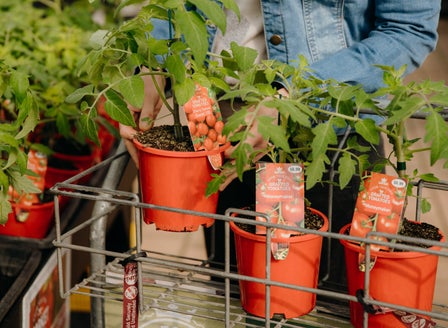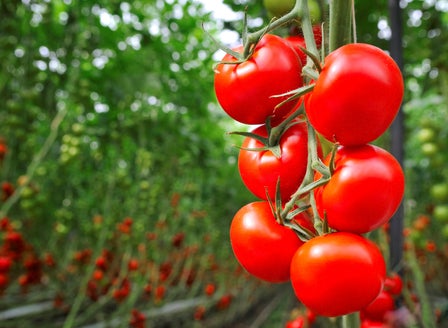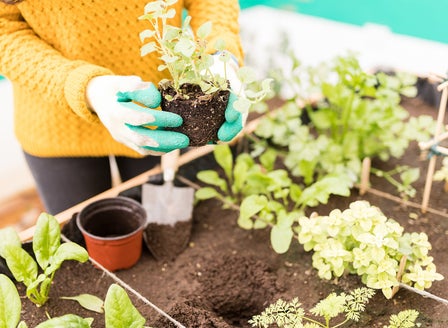There is nothing quite like growing and eating your own tomatoes, and though they are annuals and will only last one year, they are fast-growing and easy-care.
Planting Calendar
Tomatoes need three months of warm, frost-free weather for the fruit to mature and ripen. Tradition has it that tomatoes should be planted outdoors around Labour Weekend for best results, although with our warm climate in Auckland you can get a good crop from your plants if planted any time between early September to early February. If you are lucky enough to have a greenhouse, then the growing season can be extended from mid August to mid January
Harvest In
60 - 85 Days
Tomatoes will be ready to harvest approximately 60 to 85 days after planting depending on the climate.
Prepare
Position
Tomatoes need as much sun as possible with some air movement. They like to grow in a free draining soil rich in compost with the added addition of lime.
Soil
When planted into the ground, tomatoes like a free draining soil that is rich in organic matter. To improve the organic content in your soil, break up the soil and add Kings Compost and Kings Sheep Pellets then mix together well. When growing in containers, plant into a specialized Tomato mix or Living Earth Organic Veggie Mix. Add Saturaid as this helps to channel water deep down to the roots where it is most needed.
Plant
If planting grafted tomatoes, ensure that the graft is at least 1 cm above the soil line. When planting into the ground, gently tap the plant out of its pot. Dig a hole twice the depth and width of the plants root ball. Mix Kings Compost into your existing soil at a 50/50 ratio, add Sheep Pellets and Kings Tomato Fertiliser, then mix together well. Back fill the hole with this soil, so that when planted the top of the plant’s roots sit level with the surrounding ground. Firm the soil down gently and water in well with Aquaticus Organic Garden Booster. In heavier clay soils, where drainage is likely to be an issue, plant onto a raised mound and sprinkle Gypsum Clay Breaker into the bottom of the hole, this helps slowly condition the soil and will help to break down the clay. Provide a stake to tie your tomato plants to as they grow. Tomatoes can reach 6ft in height.
Care
Watering
Water slowly allowing the water to sink down into the roots, rather than allowing it to run off the top of the soils surface. Add Saturaid into the soil at planting as this will help channel the water deep down into the root zone. If planted in pots never allow the pot to sit in water. When growing in the ground water deeply every second day, when in pots water daily until water runs from the bottom of the pot.
Feeding
Tomatoes are gross feeders. As soon as the plant begins to flower they should be fed once every two weeks with Kings Liquid Tomato Food. Using a specific tomato food is important as it is high in potassium/potash, that will encourage more flowering and fruiting. In addition feed monthly with Aquaticus garden Booster for strong and healthy roots. For an Organic option feed with Grosafe Ocean Fert
Protecting
Birds love to peck at your Tomatoes just as they start to ripen. Cover with bird netting to protect fruit. Tomatoes are prone to some pests and diseases, therefore it is better to spray for prevention rather than cure.
Spraying
Spray regularly as per the instructions with Free Flo Copper to fight against Blight and Kiwicare Super Sulphur to fight against Powdery Mildew. Spray with Yates Success Ultra to protect against insect pests. Or for an organic options spray with Aquaticus Bugtrol. When using sprays, chemicals or fertilisers always read the label and follow the instructions. Apply sprays in the evening to avoid harming beneficial insects.
General Care
Grafted tomatoes These plants have been grafted onto a rootstock which has been bred for its outstanding vigour and resilience. The rootstock has increased resistance to many of the wilt and fungal diseases that affect tomatoes. With increased vigorous growth comes more flowers and fruit - up to 3-5 times more fruit than a traditional, seed-grown tomato plant. The grafted tomato’s lateral side shoots do not need removal as the roots can supply the leaves, flower and fruit with the water and nutrients required to sustain them. When planting grafted tomatoes take into account that they are larger than ordinary tomato plants, and will need more space.
Beginner Tip
Lateral shoots form between where a side shoot joins the main stem. These should be removed on seed-grown plants as they detract from the fruiting performance of the plant.
Expert Tip
Blossom End Rot is usually caused by inconsistent watering or lack of Calcium in the soil. This is why it is important to add lime when planting and to keep the soil evenly and deeply watered.
Tip
Crop rotation is important, it is best not to grow crops form the same family in the same place year after year. Planting a different type of crop in the same plot will improve soil health, nutrients and help prevent diseases recurring by interrupting pest and disease cycles.
Top Varieties
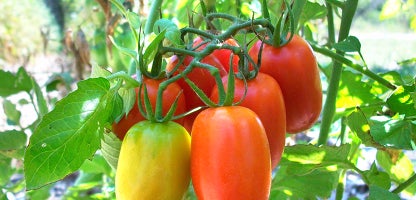
Roma
An oval-shaped variety with low acidity, great for pastas and sauces.
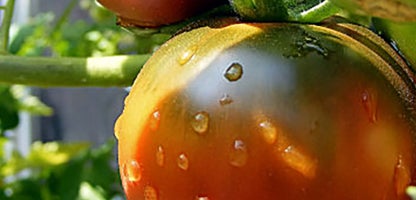
Black Krim
An heirloom variety (so save those seeds!) with a beautiful, dark skin.
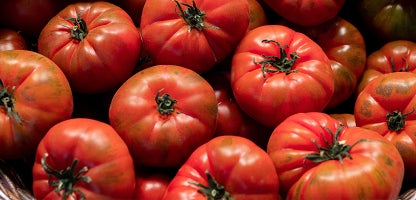
Beefsteak
A variety which produces extra large fruit that are great for burgers and sandwiches.
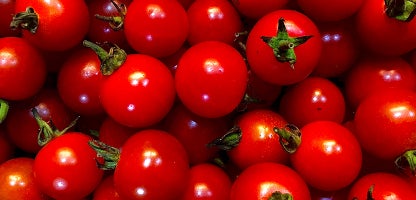
Sweet 100
Producing a large crop of small, sweet cherry tomatoes which are best eaten fresh.
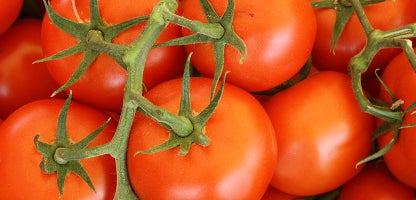
Moneymaker
Medium sized fruit, great flavour - similar to those sold in the supermarket.
Frequently Asked Questions
Can I import tomato seeds from overseas?
You cannot buy tomato, chilli or capsicum seed overseas and get it shipped to New Zealand as they have potential to spread disease. Always double-check with MPI before buying any seed online overseas, otherwise they will be confiscated and you could be fined.
How often should I water my tomato plants?
Water slowly allowing the water to sink down into the roots, rather than allowing it to run off the top of the soils surface. Add Saturaid into the soil at planting as this will help channel the water deep down into the root zone. If planted in pots never allow the pot to sit in water. When growing in the ground water deeply every second day, when in pots water daily until water runs from the bottom of the pot.
When and how should I fertilise my tomato plants?
Tomatoes are gross feeders. As soon as the plant begins to flower they should be fed once every two weeks with Kings Liquid Tomato Food. Using a specific tomato food is important as it is high in potassium/potash, that will encourage more flowering and fruiting. In addition feed monthly with Aquaticus garden Booster for strong and healthy roots. For an Organic option feed with Grosafe Ocean Fert
Why are my tomato plants not producing fruit?
Several factors can affect fruit production, including insufficient sunlight, poor pollination, extreme temperatures, and nutrient imbalances. Ensure your plants get enough light, have good airflow, and are protected from temperature extremes.
When can I harvest my tomatoes?
Tomatoes will be ready to harvest approximately 60 to 85 days after planting depending on the climate.
